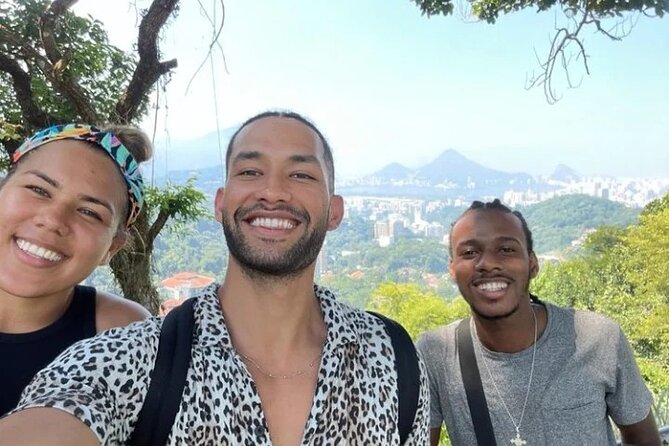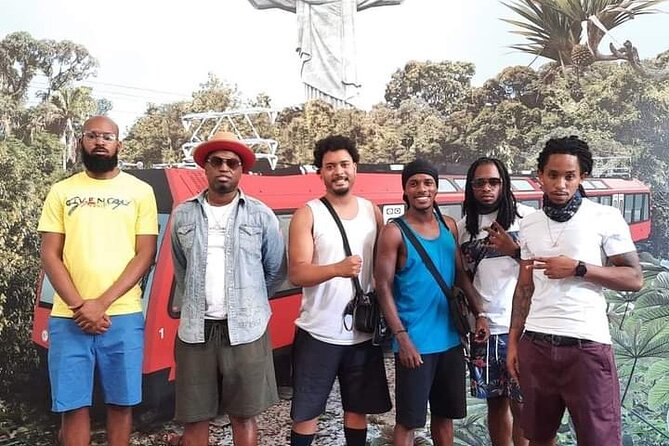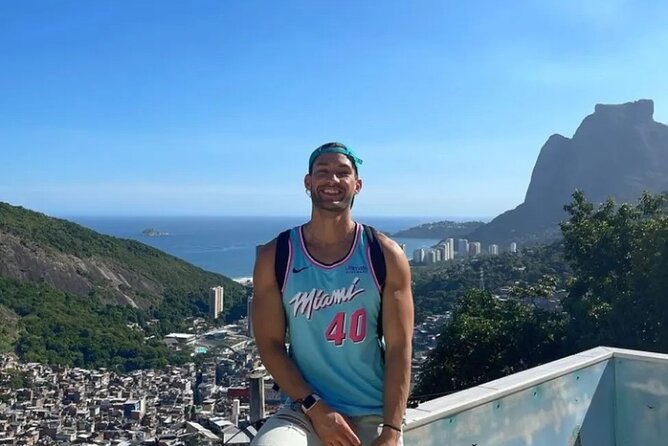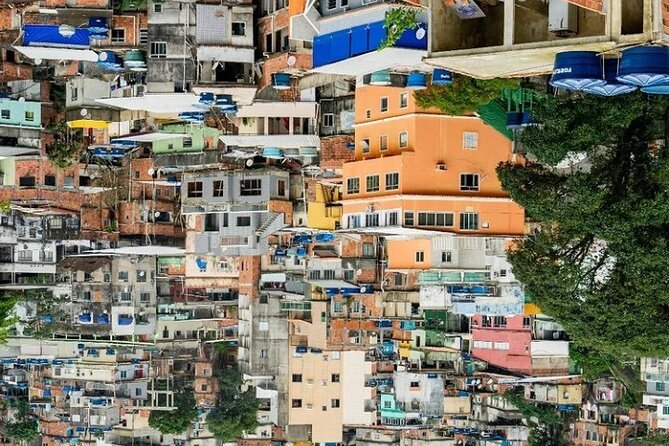Nestled between affluent neighborhoods in Rio de Janeiro, Favela da Rocinha stands as one of Latin America’s largest and most vibrant informal settlements. This thriving community, established in the early 20th century by rural migrants, has evolved into a dynamic hub showcasing the resilience and resourcefulness of its residents. Despite the socioeconomic challenges they face, Rocinha’s people have cultivated a rich cultural identity, evident in their thriving businesses, artistic expressions, and strong community bonds. Exploring the history and culture of this iconic favela reveals a story of pride, creativity, and the indomitable spirit of those who call it home.
Key Points

-
Favela da Rocinha, one of the largest favelas in Latin America, has a rich history, originating in the early 20th century as a settlement for rural migrants to Rio de Janeiro.
-
The favela’s strategic hillside location and rapid growth due to continued migration have contributed to its unique culture, marked by resilience, resourcefulness, and a strong sense of community identity.
-
Rocinha’s architecture reflects the residents’ adaptability, with multi-story homes and a winding layout of streets and alleys that respond to the steep terrain, complemented by vibrant murals and graffiti.
-
The favela is home to a thriving local economy, with small businesses, artisanal markets, and community centers serving as essential services and social interaction hubs, fostering a sense of pride and belonging.
-
Despite facing significant challenges, such as poverty, lack of access to basic services, and safety concerns, the residents of Rocinha have preserved their rich cultural heritage and are engaging in discussions about the impact of tourism on their community.
Location and Significance
The Favela da Rocinha is located in Rio de Janeiro, Brazil, nestled between the affluent neighborhoods of São Conrado and Gávea.
As one of the largest favelas in Latin America, it’s home to over 100,000 residents. The favela’s strategic location, perched on a hillside overlooking the city, has contributed to its unique history and culture.
Over time, the Favela da Rocinha has evolved from a small settlement to a vibrant community with its own infrastructure, economy, and social dynamics.
Its proximity to the wealthy areas of Rio has shaped the favela’s relationship with the rest of the city, highlighting the stark socioeconomic divisions that exist within the metropolis.
Fascinated by Rio de Janeiro's past? More historical tours we've covered
History of Favela Development

Historically, the Favela da Rocinha began as a small settlement in the early 20th century. As rural workers migrated to Rio de Janeiro, they established this community on the slopes of the Dois Irmãos mountains.
Over time, the favela grew rapidly, driven by continued migration and lack of affordable housing options. By the 1970s, Rocinha had become one of the largest and most densely populated favelas in Brazil.
Despite facing challenges like inadequate infrastructure and limited access to public services, the community has developed a vibrant culture, with residents finding creative ways to meet their needs and build a sense of belonging.
Favela Residents and Community

Resilience and resourcefulness define the Favela da Rocinha’s residents, who’ve built a vibrant community against the odds.
Despite limited access to basic services, they’ve established thriving businesses, schools, and cultural institutions. Neighbors support one another, fostering a strong sense of unity.
Residents take pride in their home, organizing events that showcase the favela’s musical heritage and artistic talent.
While outsiders may perceive the favela as impoverished, its people have transformed their neighborhood into a hub of resilience and creativity.
Their determination to build a life within this urban settlement speaks volumes about the human spirit.
Architecture and Urban Planning
Favela da Rocinha’s architecture and urban planning reflect the resourcefulness and adaptability of its residents. Homes are built vertically, with multi-story structures maximizing limited space. Materials range from concrete and bricks to recycled items, showcasing innovative construction techniques.
The winding, maze-like layout of the favela’s streets and alleys demonstrates a practical response to the community’s organic growth:
- Narrow pathways allow for efficient use of the steep, hilly terrain.
- Multifunctional spaces, such as rooftops, serve as gathering areas and recreational spaces.
- Colorful murals and graffiti transform the urban landscape, infusing it with a vibrant, artistic spirit.
Local Attractions and Businesses
Within the vibrant community of Favela da Rocinha, local attractions and businesses thrive, offering visitors a glimpse into the daily life and entrepreneurial spirit of its residents.
Residents have established an array of small shops, restaurants, and community centers that cater to the needs of the neighborhood. Visitors can explore artisanal markets, sample traditional Brazilian cuisine, and even participate in cultural activities organized by local organizations.
These enterprises not only provide essential services but also serve as hubs of social interaction, fostering a strong sense of community identity and pride among the Rocinha residents.
- Exclusive Helicopter Flight (2 Passengers)- Sugar Loaf and Christ the Redeemer
- Discover Rio Little Africa: A Cultural and Historical Journey
- Rios Cookin Good: 9-Dish Fiesta W/ Market Tour & Caipis Galore
- Experience Hang Gliding or Paragliding in Rio
- Climb to the Top of Sugarloaf Mountain
- Rio De Janeiro Ferris Wheel Ticket – Yup Star
Challenges and Socioeconomic Factors
While the Favela da Rocinha is home to a vibrant community, residents face significant socioeconomic challenges. The favela is plagued by high rates of poverty, unemployment, and crime, all of which contribute to the challenging living conditions.
Some key challenges include:
-
Lack of access to basic services: Many residents lack access to reliable electricity, clean water, and proper sanitation.
-
High unemployment and limited economic opportunities: Job options are scarce, leading to a reliance on informal work and illicit activities.
-
Safety concerns and violence: The favela has a reputation for crime, and residents often feel unsafe in their own neighborhoods.
These socioeconomic factors create a complex web of challenges that the Rocinha community must navigate daily.
Favela Tourism and Ethical Considerations
Amidst the complex socioeconomic challenges faced by the Rocinha community, the growth of favela tourism has sparked discussions around the ethical considerations of these experiences. While tours can provide economic opportunities and expose visitors to the vibrant culture, concerns exist around issues of privacy, authenticity, and power dynamics. A closer look at the ethical impacts of favela tourism reveals both potential benefits and risks:
| Potential Benefits | Potential Risks |
|---|---|
| Economic opportunities for residents | Exploitation of local culture and privacy |
| Increased awareness and cross-cultural exchange | Reinforcement of stereotypes and imbalance of power |
| Community-led initiatives and storytelling | Lack of meaningful engagement and sustainable development |
Navigating the ethics of favela tourism requires ongoing dialogue and collaboration between tour operators, residents, and visitors to ensure these experiences empower and uplift the Rocinha community.
Preserving Favela Culture and Identity

As the popularity of favela tourism continues to grow, preserving the rich cultural identity and traditions of the Rocinha community becomes increasingly vital.
While visitors gain valuable insights into local life, it’s crucial to ensure the preservation of Rocinha’s unique heritage.
This can be achieved through:
-
Promoting sustainable and ethical tourism practices that empower the community and protect its cultural assets.
-
Supporting local initiatives and organizations dedicated to celebrating and safeguarding Rocinha’s traditions, arts, and way of life.
-
Encouraging collaborative efforts between the government, tour operators, and residents to develop inclusive policies and programs that prioritize the community’s needs and aspirations.
Frequently Asked Questions
Is the Tour Wheelchair Accessible?
The tour is not wheelchair accessible, but it is stroller accessible according to the details provided. Travelers with back problems, pregnant women, or those with serious medical conditions are also not recommended to take this tour.
What Is the Tour’s Cancellation Policy?
The tour offers free cancellation up to 24 hours before the experience starts, allowing travelers flexibility in their plans. Cancellation policies are favorable, making it easy for participants to adjust their schedules as needed.
What Is the Dress Code for the Tour?
There’s no strict dress code for the Favela da Rocinha Tour, but casual, comfortable clothing is recommended. Participants should wear closed-toe shoes and bring sun protection, as the tour involves walking and exposure to the elements.
Can Children Participate in the Tour?
Children can participate in the Favela da Rocinha Tour, as it’s stroller accessible. However, it’s not recommended for travelers with serious medical conditions or pregnant women due to the active nature of the experience.
Are Photography and Videography Allowed During the Tour?
Yes, photography and videography are allowed during the Favela da Rocinha tour. The tour encourages participants to capture the vibrant culture and daily life of the community, though it’s polite to ask residents for permission before taking their photos.
Recap
The vibrant history and culture of Favela da Rocinha reflect the resilience and creativity of its residents. Despite facing socioeconomic challenges, the community has cultivated a rich identity through thriving businesses, artistic expressions, and strong bonds. Although favela tourism raises ethical considerations, preserving the unique character of Rocinha is crucial in honoring the community’s proud legacy and safeguarding its resilient spirit.
More Historical Tours in Rio de Janeiro
More Tour Reviews in Rio de Janeiro
- Discover Noronha: 7-Hour Ilhatour Adventure
- Private Sugar Loaf With Fast Pass Ticket and Hotel Pick up
- Rio De Janeiro: 30-Minute Tandem Paragliding Flight
- Rio De Janeiro: Vasco Da Gama Matchday Experience With Local
- Rio Essencial: the 3 Must-See Tourist Attractions
- From Rio: Arraial Do Cabo Day Trip With Boat Tour
Not for you? Here's more things to do in Rio de Janeiro we have recnetly reviewed
- 6 Best Canoe And Kayak Experiences In Rio De Janeiro
- 6 Best Canoe And Kayak Experiences In Rio De Janeiro
- 14 Best Food Tours in Rio De Janeiro
- 20 Best Full-Day Tours in Rio De Janeiro
- 2 Best 2 Day Tours In Rio De Janeiro
- 3 Best 3 Day Tours in Rio De Janeiro
- Best Jet-Ski Experiences in Rio De Janeiro
- 2 Best 4 Day Tours in Rio De Janeiro
- 3 Best BBQ Experiences In Rio De Janeiro
- 20 Best Photography Experiences in Rio De Janeiro
- 14 Best Dining Experiences In Rio De Janeiro
- 14 Best Dinner Tours In Rio De Janeiro
